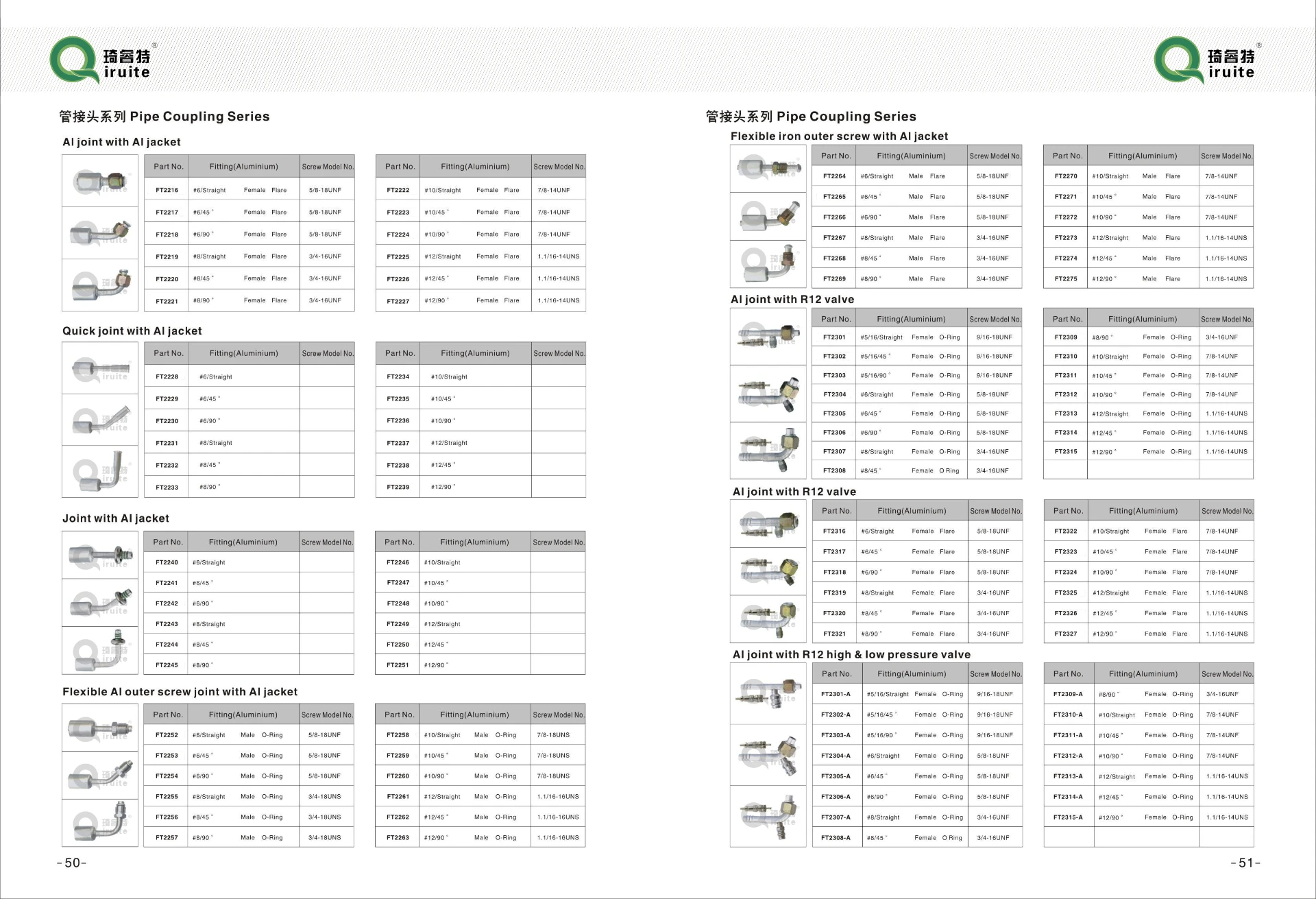power steering hydraulic hose
Understanding Power Steering Hydraulic Hose An Essential Component for Vehicle Performance
Power steering is a crucial feature in modern vehicles, providing drivers with a more comfortable and controlled experience when maneuvering their cars. At the heart of this system is the power steering hydraulic hose, a vital component that ensures the efficient transfer of hydraulic fluid from the pump to the steering gear. Understanding the significance and functioning of the hydraulic hose can help vehicle owners maintain optimal steering performance and prevent potential issues.
What is Power Steering Hydraulic Hose?
Power steering hydraulic hoses are specially designed tubes that carry hydraulic fluid under pressure. These hoses are typically made from durable materials, resistant to various environmental factors and high pressures that are inherent to the power steering system. The hoses serve a vital function; they connect the power steering pump, which generates hydraulic pressure, to the steering gear, where this pressure assists in turning the wheels.
There are generally two types of hoses in a power steering system high-pressure and low-pressure hoses. The high-pressure hose carries fluid from the pump to the steering gear under significant pressure, while the low-pressure hose returns the fluid back to the pump. Both types of hoses must be tightly sealed and well-maintained to prevent leaks that could lead to steering system failure.
Importance of Power Steering Hydraulic Hose
The efficiency of a power steering system largely depends on the reliability and condition of its hydraulic hoses. Over time, hoses can wear out due to heat, exposure to harsh weather conditions, and constant flexing during vehicle operation. A compromised hose can lead to fluid leaks, resulting in diminished power steering assistance and making the vehicle harder to steer. In severe cases, it could lead to total steering failure, posing serious safety risks.
power steering hydraulic hose

Routine inspection of power steering hydraulic hoses is crucial. Signs of wear, such as cracks, bulges, or frayed edges, indicate that the hose may need replacement. Regular maintenance and timely repairs can enhance not only the longevity of the power steering system but also the overall safety and performance of the vehicle.
Replacing Power Steering Hydraulic Hose
When it comes to replacing power steering hydraulic hoses, it's essential to choose high-quality parts that meet or exceed OEM specifications. Substandard hoses may save money in the short term but can lead to more significant issues and costs down the line. Vehicle owners should consult their manufacturer’s guidelines or a professional mechanic when undertaking this task.
Typically, the replacement process involves safely lifting the vehicle, draining the power steering fluid, and removing the old hoses. New hoses must be installed carefully, ensuring that all connections are tight and free from leaks. After replacement, the power steering system should be bled of air to ensure proper functionality.
Conclusion
The power steering hydraulic hose plays a crucial role in ensuring a smooth and responsive driving experience. Understanding its function and maintaining its condition can prevent significant driving hazards and enhance the longevity of the vehicle's steering system. Regular inspections and prompt replacements will ultimately lead to better control and safety on the road. Vehicle owners should always prioritize the maintenance of their power steering systems to enjoy the full benefits of modern automotive technology. By staying proactive about the condition of the power steering hydraulic hoses, drivers can ensure that their vehicles remain safe and reliable for years to come.
-
Ultimate Spiral Protection for Hoses & CablesNewsJun.26,2025
-
The Ultimate Quick-Connect Solutions for Every NeedNewsJun.26,2025
-
SAE J1401 Brake Hose: Reliable Choice for Safe BrakingNewsJun.26,2025
-
Reliable J2064 A/C Hoses for Real-World Cooling NeedsNewsJun.26,2025
-
Heavy-Duty Sewer Jetting Hoses Built to LastNewsJun.26,2025
-
Fix Power Steering Tube Leaks Fast – Durable & Affordable SolutionNewsJun.26,2025

